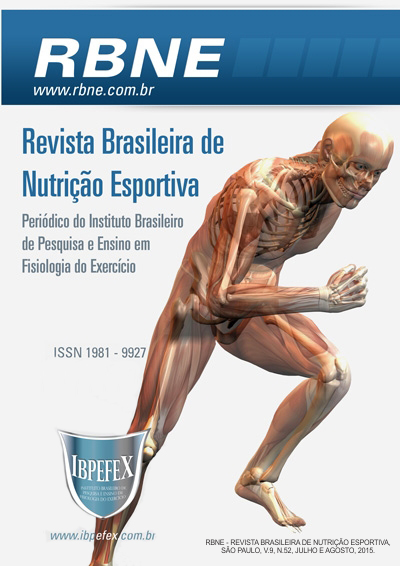Anthropometric assessment in children with Myelomeningoncele
Abstract
Introduction: Children with myelomeningocele are a heterogeneous group with complex chronic disorders. Nutritional support is essential for estimating the growth curve, changes in weight and growth speed, to set the prevention and minimization of complications.Aim: To assess the anthropometry of children with myelomeningocele inserted in a program of physical activity.Methodology: This was a retrospective study of children with myelomeningocele, including 17 children participated, 11 males and 6 females agedbetween 7 and 12 years old. Data were compared with reference standards (OMS 2007), by the indicators: E / I and BMI / I in percentiles.Results: We observed that in boys there stature in 72.7% and has remained at 63.6% in the second evaluation. And the girls stature in 66.7%, remained appropriate for age in both evaluations. And the group of boys decreased overweight and obesity in the period of 1year and the group of girls were overweight and 50% obese in both measurements.Discussion: A myelomeningocele is directly related to the losses in growth and the high prevalence of overweight and obesity in this population is justified by the combination of loss of mobility and not by excessive food intake.Conclusion: We conclude that there was a deficit in growth largely boys, trend, for much of the group, to overweight and obesity. And more studies to check the nutritional status of children with myelomeningocele are needed.
References
-Brandão, A.D.; e colaboradores. Características de crianças com mielomeningocele: implicações para a fisioterapia. Fisioter Mov. Vol. 22. Núm. 1. p. 69-75. 2009.
-Brasil. Ministério da Saúde. Secretaria de Atenção à Saúde. Departamento de Atenção Básica -Coordenação Geral da Política de Alimentação e Nutrição. Sistema de Vigilância Alimentar e Nutricional (SISVAN). Orientações para a coleta e análise de dados. Antropométricos em serviços de saúde. Norma Técnica. Brasília. SISVAN. 2008.
-Bronzeri, F.G.; e colaboradores. Mielomeningocele e nutrição: proposta de protocolo de atendimento. O Mundo da Saúde. São Paulo. Vol. 35. Núm. 2. p. 215-224. 2011.
-Coelho, C.M.; e colaboradores. Evolução do estado nutricional de crianças com mielomeningocele em período de três anos. O Mundo da Saúde, São Paulo. Vol. 33. Núm. 3. p. 347-351. 2009.
-Elias, R.E. Precocious puberty in girls with myelodysplasia. Pediatrics. 1994; 3:521-2. 1994.
-Nacif, M.; Viebig, R.F. Avalição antropométrica nos ciclos da vida: uma visão prática. São Paulo. Editora Metha. 2007.
-Ponte, S.F.A.; e colaboradores. Medidas antropométricas como indicadores do estado nutricional em pacientes com espinha bífida submetidos a enterocistoplastia. Einstein. Vol. 11. Núm. 2. p. 168-73. 2013.
-Ribeiro, S.M.L.; Silva, R.C.; Monteiro, C.B.M.; Tirapegui, J. Deficiências Motoras. In: Paschoal, V.; Naves, A. Tratado de nutrição esportiva funcional. São Paulo. Roca. p 603-611. 2014a.
-Ribeiro, S.M.L.; Silva, R.C.; Monteiro, C.B.M.; Tirapegui, J. Exercício em cadeiras de rodas. In: Hirschbruch, D.M. Nutrição Esportiva: Uma visão Prática. São Paulo. Manole. p 199-210. 2014b.
-Santos, A.L.B.; Leão, L.S.C.S. Perfil Antropométrico de pré-escolares de uma creche em Duque de Caxias, Rio de Janeiro. Revista Paulista de Pediatria. Vol. 26. Núm. 3. 2008.
-Sociedade Brasileira de Pediatria. Avaliação nutricional da criança e do adolescente. Manual de Orientação. Sociedade Brasileira de Pediatria. Departamento de Nutrologia. São Paulo.2009.
-Sousa, F.G.M.; Araujo, T.L. Avaliação Nutricional de Crianças de Seis a sessenta meses, Revista Brasileira de Enfermagem. Brasília (DF). Vol. 57. Núm. 5. p. 534-6. 2004.
-Trollmann, R.; Dorr, H.G.; Strehl, E.; Katalinic, A.; Beyer, R.; Wenzel, D. Growth and pubertal development in patients with meningomyelocele: a retrospective analysis. Acta Paediatr. Vol. 85. p. 76-80. 1996.
-Zuchetto, A.T.; Miranda, T.B. Estado nutricional de crianças e adolescentes com deficiências. Revista Digital. Buenos Aires. Ano 16. Núm.156. 2011.
Authors who publish in this journal agree to the following terms:
- Authors retain the copyright and grant the journal the right of first publication, with work simultaneously licensed under the Creative Commons Attribution License BY-NC which allows the sharing of the work with acknowledgment of the authorship of the work and initial publication in this journal.
- Authors are authorized to enter into additional contracts separately for non-exclusive distribution of the version of the work published in this journal (eg, publishing in institutional repository or book chapter), with acknowledgment of authorship and initial publication in this journal.
- Authors are allowed and encouraged to post and distribute their work online (eg, in institutional repositories or on their personal page) at any point before or during the editorial process, as this can bring about productive change as well as increase impact and impact. citation of published work (See The Effect of Free Access).






